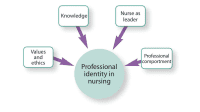We say it in various ways—“The only constant in health care is change,” or “Change is inevitable.” But however we say it, we know change is hard. We associate change with fixing problems. We find problems because we look for them, and believe there must be a solution.
More than 20 years ago, David Cooperrider and colleagues at Case Western Reserve University pioneered appreciative inquiry (AI), an affirmative approach to change for organizational renewal. Originally, business organizations used AI to improve corporate culture, efficiency, and profitability. AI nurtures change by illuminating the strengths, vision, and ideals of individuals in the organization. The basic premise of AI is to maintain what’s best about a living system, past and present. This helps group members feel important and creates more satisfying results.
AI emphasizes positive thoughts and actions. Group members dream together, develop a shared vision for the desired future, and take actions to reach that future state. Instead of looking for problems, participants focus on identifying what’s working. The result is new energy and confidence, which help craft a positive outlook and commitment to change.
The fundamental building block of AI is asking questions. Answers to questions lead to statements that describe the group’s strengths and high points or positive attributes, identify where the group has been, and point to where it wants to be.
Initiating the process
AI involves four stages: discovery, dream, design, and destiny. First, the group selects and defines a topic (a problem, challenge, or crisis), then reframes it into an opportunity. They talk about the meaning and purpose of the topic. It shouldn’t be too big or too detailed—but should be important enough to merit the group’s attention.
In the discovery stage, group members ask questions to explore the chosen topic. Questions may include “What’s working well?” or “What makes you extremely proud to be part of our group?” Members can ask questions of each other or of the group as a whole. Follow-up questions and discussion help identify individuals’ strengths, the group’s collective capacity, and positive energy.
In the dream stage, the group envisions an ideal future state as it relates to the chosen topic, and affirms it in writing as if it’s actually happening. Called a “provocative proposition,” this affirmative statement is a bold, present-tense declaration that impels the group to stretch their thinking beyond the present, to what can be. Once the proposition is formed, the group explores its authenticity by asking more questions, such as, “Will reaching the future state drive innovation?” or “Will the group generate passion around achieving this vision?”
The design stage mobilizes the vision into a plan. The process can be structured, using brainstorming to bring together common themes and having group members vote to accept action steps based on interest, priorities, or resources. The group commits to the final plan, pledging energy and effort to achieve the action steps.
The destiny stage results from implementing the plan of action, shared learning, and sustaining transformative change. Like quality improvement, the process never stops; we learn from reflection, take new actions, and continue the journey of innovation and change. In AI, the group gains positive energy from discovering what gives meaning to work and sharing personal stories and values.
Personal reflection
As an administrator for 25 years, I have been a problem solver and a “fixer.” (Isn’t that what managers are supposed to be?) Today’s work force demands positive leadership that guides the way to change, not just imposes new rules and requirements. Employees want to contribute new ideas, enjoy their work, and maintain a work/life balance.
AI provides a fresh approach to change in which everyone’s opinions, thoughts, and ideas count. Engaging colleagues in the AI process can be both humbling and invigorating. As Margaret J. Wheatley wrote in Turning to One Another, “Real change begins with the simple act of people talking about what they care about.” Dream of what you can achieve together, and your vision will become reality.
Pamela F. Cipriano, PhD, RN, FAAN, CNAA-BC
Editor-in-Chief

















